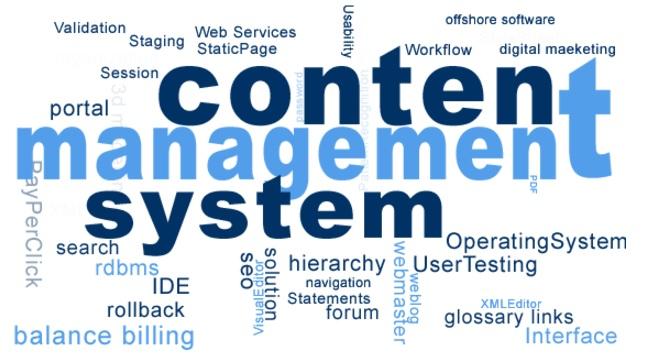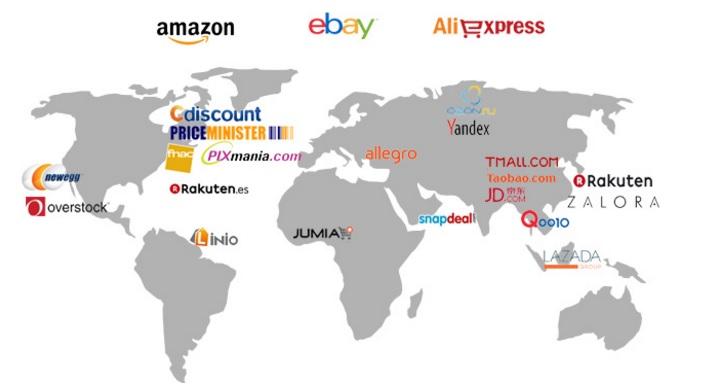Workflow Management Guide: How to Manage Your Ecommerce Store
Wondering how you can better organize your orders and set up the most productive workflow for your online business? Want to discover new strategies to expand your eCommerce website and increase your sales? This handbook has the answers you are looking for. Whether you have just opened up an online shop or you prepare to promote your products in the marketplace! Let’s discuss more on an effective workflow management system!
Learn how to better manage your store to increase your sales and centralize your orders across marketplace channels. Know how to improve your delivery performance and adopt new pricing strategies. Figure out other eCommerce management processes that usually take a lot of time and effort.
In this post, you’ll find out:
- What eCommerce and marketplace management presupposes
- What are the best practices for setting up an efficient workflow
- What eCommerce solutions, tools, and services you need. Especially those that can help simplify your management processes and maximize your profit
Learn the easiest ways to manage your eCommerce store and increase your sales. Know how to offer your clients the best user experience in the online market!
1. eCommerce Management

How to Manage an eCommerce Website – Image Source: magenticians.com
As the use of the world wide web becomes more and more sophisticated, business is evolving. Endless commercial opportunities arise for all online retailers. The latest technological innovations in eCommerce give rise to a new era. The era where merchants can expand their business and increase their sales performance. You can now reach out to a broader audience, build wider and stronger customer relationships & generate more profit for your store!
These days, having a powerful brand and a well-developed eCommerce website is not enough. Especially if you want to occupy a top position in a competitive market. The bigger your catalog is, the bigger your strategy. The more product types you have, the more it is necessary to adopt a strategic management approach to make the best out of your business.
Yet, when it comes to management, there’s no one-size-fits-all solution. You have only personalized strategies that can help you improve your workflow. They are to increase customer satisfaction in the long-term. Strategies that can transform first-time customers into lifetime buyers!
2. What Managing an eCommerce Business Means

Managing eCommerce Websites Image Source: Magento.com
The process of managing your eCommerce website implies a series of operations and activities. They aim to accomplish the business goals you have set for your company for a limited period.
An ideal workflow process covers all aspects, from manufacture to the sale of the end product. It also contains monitoring and analysis procedures that aim to improve the services and the business flow. These will reduce the effort and costs while increasing the ROI.
Here are the main tasks implied in every eCommerce management process:
- Website management
- Product data feed management on Amazon, eBay, Sears, and other marketplaces
- Promoting your online business
- Adopting different pricing strategies to see what works best for your business
- Offering customer service support for your clients
- Managing deliveries, orders, stock, and warehouse inventory
To enjoy all these services, you can choose to work with an agency. They can provide you the exact management services your eCommerce store needs. This way, you can get rid of the in-house financial spending and only pay for the support you need to successfully manage your online store.
You can also do it yourself if you are willing to learn from the best eCommerce wizards! In this guide, you’ll find out how eCommerce professionals do it. So, you can create an efficient workflow and receive more effective transactions for your online shop!
3. How to Find Out What Your eCommerce Business Needs Are

eCommerce Business – Image Source: pexels.com
Before contracting an online marketplace management agency or buying tools & extensions to help you manage your online store, you have to analyze what your business needs are. Here is a list of factors that can help you decide:
- The way you choose to manage your eCommerce business depends on your infrastructure. It also depends on your business model and the goals you have set for long or short terms.
- Think about how big your catalog is right now and how big you plan to expand it in the future
- What data you want to be able to control more easily: product data, shipping orders data, order statuses, stock data, and so on.
- Make a list of needs and then search to see if the eCommerce platform you are currently using can offer you some apps to help you manage what you need
Check to see if any of the manual processes you are currently using to manage your store can be replaced by an extension. This extension should be able to make your workflow more productive. That is, it keeps everything updated without spending too much time and effort on these crucial tasks.
4. What Marketplace & Multi Marketplace Management Is

Marketplace Solutions – Image Source magenticians.com
The shift from a basic eCommerce store to a multi-marketplace defines a completely new way of attracting customers on a global level. Nowadays, eCommerce marketplaces have become a necessity for every business to improve sales performance.
Multi-vendor marketplace brought lots of benefits to customers and sellers altogether! Your clients can comfortably order your products from many stores. It can then be shipped to their doorstep in the shortest time, almost anywhere in the world.
Compared with an eCommerce standalone website, marketplaces offer merchants many opportunities. They can promote their goods while cutting the costs of warehouse and delivery management.
Every day merchants like you are constantly searching for tips and tricks. They want to learn new ways to keep the workflow running on several eCommerce platforms. Especially platforms like eBay, Amazon, Sears, and Rakuten. Then, they can make sure that every transaction and order goes as planned.
If you want to keep the business growing, you have to find new and creative ways to reach out to more and more customers and make them convert. Thus, marketplaces represent a huge opportunity for every small or big sized business to expand. Whether they have or don’t have a standalone eCommerce website.
There are lots of options available for you to manage your customer’s activity across the marketplaces you have selected for your business. You can enjoy a secure and easy flow for multiple operations, such as:
- managing solutions for your product information across all channels.
- Enterprise resource planning systems that can help you manage all processes in real-time, from product planning to purchase.
- warehouse management systems
- reporting systems that can help you gather all info in a common area for ease of control
- inventory management systems, stock-keeping units & other operations that can make it easier to handle each channel in the marketplace
To optimize their processes, lots of online shops use tools, extensions, or managed eCommerce services. These help them manage their product listings and promotions. They can offer customer services and feedback to their buyers. It generally simplifies their day-to-day business routine!
If you want to adopt new strategies to improve your sales, reach out, and attract new customers, to make your business prosper, you can hire a team of eCommerce specialists to manage your online shop.
5. eBusiness Management Best Practices

eCommerce Workflow Management – Image Source: magento.com
Every eCommerce business workflow has these fundamental parts:
- Commercial activities & production is the core of every business. They contain activities such as payment data and catalog management
- Data management: how all your store’s data are indexed, stored, searched, retrieved, and displayed to users. How all associated payment info and transactions are managed
- Workflows contain both backend processes and front end-processes. These assure good communication & control between your company’s employees. Also, between you and your suppliers, and you and your customers.
Managing your eCommerce business workflow means planning and scheduling all these aspects. This includes managing the data related to the number of products you have on your website. You have to make sure that all transactions are safely made. But that’s not all. It also involves organizing your employees’ tasks. Then, making sure that every piece of information is delivered on time to the right person. These will keep the business processes in motion.
There are different workflow models that you can adopt, depending on business requirements. But, the goals are the same. They involve setting every work process so that everyone is efficient and effective at their jobs. Ultimately, your customers are satisfied with the results!
Adding products to your website is an ongoing task that you’ll have to handle. It’s important if you want to constantly provide fresh products and keep your customers engaged! Thus, the aim of creating an efficient workflow also refers to setting up different patterns for every activity. They include making the process more reliable, transparent, and manageable for you or your employees. All these are while providing quality services to your visitors.
Almost all business processes can be managed with the help of automated software. This makes it easy for you to assign roles to each employee and helps employees to cooperate. It also provides centralized data that is crucial for every business decision that you make.
Many companies choose to use dedicated management apps. These aim to simplify the business workflow and provide a structure to all the tasks and processes. The most successful ones choose to hire a team of professionals to do the job for them.
The first option leaves a lot of tasks for you to handle. But, the second option can help you make significant savings. You only pay for the tasks you need to externalize and concentrate your time and resources on what you can efficiently handle yourself.
Choosing to hire a team of experts to do the job for you will give you tons of benefits. YOu can faultlessly integrate all the tasks specific to eCommerce management in a way that unlocks your company’s potential. This provides efficiency and coherency with your business goals!
6. Data Management for eBusinesses

Content Management for Ecommerce Shops – Image Source: cmscritic.com
6.1. Catalog Management
Managing your product data is an essential, though complex, process for all e-businesses. As such, how you choose to manage your catalog and product info reflects the quality of your goods and services and has a direct impact on your sales.
To increase the efficiency of your business workflow, standardization is a must. Using content management, dedicated tools, and applications is only a step in managing your online catalog.
Other important issues, such as managing database schemas for large catalogs, translating, publishing, indexing, are part of the best practices eCommerce professionals use to provide a good workflow for your business.
Choosing the right database model for electronic catalogs is important. It can make a big difference when it comes to catalog management. As the number of your products and product attributes increases, your data can become harder to manage. They can become chaotic and inconsistent.
Here are some general directions that you can use to avoid this unpleasant situation:
- Update your product data constantly. Pay attention to each and every detail when you list them to other marketplaces to make the products customer-ready
- If you’re selling across different channels, then creating multiple listings is a must. It is advisable to tailor the product listings to each marketing channel you’re affiliated with. Do this before making your products public
- If you don’t have enough information for your products from the suppliers, then do research. Give your customers a complete description of your product to increase the chances of them to convert
- Centralize all data using software that can make data management across channels easier for you
6.2. Product Management
Managing your products on your eCommerce store is one of the core processes of your online business. It covers tasks such as creating, planning, developing, testing, and launching the products you sell in the market.
The role of a product manager is to handle all these tasks. They aim to maximize sales revenues and grow your market share. Your product manager will increase the value of your goods or services based on customers’ demands. In this respect, a professional eCommerce product manager should have a market-driven approach. This is while presenting clients with the best offer in the eCommerce market.
Also, it’s the responsibility of a product manager to decide if and when a product should be launched or retired from the market. They analyze metrics such as customer satisfaction, production and promotion costs, and so on.
Here are the basic tasks of a product manager:
- Metrics analysis
- Testing and analyzing user experiences
- Run performance tests to increase conversion rates
- Research customer market and competitors
- Merchandising, cross-selling, deciding what products can be launched or retired from the market
- Identify product opportunities and develop launching strategies
- Reporting
You can prioritize time and streamline product management tasks using some dedicated eCommerce software and tools. They are designed to help you automate manual processes and control the content of each and every product in your store from one place.
Product management tools are to integrate the latest technologies into your business workflow. This will maximize your efficiency, productivity, increase the value of your goods, and your sales performance in the long term.
Product Management Tools & Software
Here’s a list of PIMs (product management information software) solutions. You can use them to edit, publish, and deliver your products to the market faster to meet your customer expectations.
- IBM Infosphere consolidation tool for all channels provides collaborative workflows with updating capabilities. They have advanced reporting and auditing features, data aggregation, and syndication. This includes other helpful features to easily manage your product info. With this, you can keep your partners and suppliers up to date with the latest changes in your inventory
- Oracle is another consolidation tool that merchants can use. It is useful for centralizing all product info from suppliers, business partners, and other channels. It has sharing and updating capabilities. Oracle helps ensure compliance with industry regulations
- Tradeshift helps multi-vendor merchants scale their work. They can also simplify their workflow, optimize, and update product information across channels. With this, they can automate data validation at any point of entry and manage products in a user-friendly environment.
Product Management Services
Do you want to improve your business workflow and achieve business success? Then searching for a trustworthy company is one of the best decisions you can make. A good one offers product management and other managed services for eCommerce to give you profitable results in the long term.
Research shows that companies that take market-driven decisions are more profitable than those that are managing their business based on other factors. If you want to take advantage of the competitive opportunities your niche opens for you, then hiring a team of eCommerce product managers to do this job is the next best step you should make!
6.3. Inventory Management
When it comes to inventory management, every business has the same goal. To have enough products to meet the customers’ demand, and not overstock and block too much capital in the process. However, this basic principle translates into the most difficult task every e-business owner meets.
Here are some basic dos and don’ts that can help you successfully manage your inventory:
- Make sure that your stock information is consistent across all channels and sales platforms you use to list your goods
- Periodically review your inventory carrying costs. You can avoid missing out on the opportunities that can increase your sales performance
- Estimate and predict your demands and supply your stocks accordingly
- Determine what is the least number of products you should always keep on your stock
- Periodically conduct inventory audits to map the products in your system with your physical stock
- Avoid keeping your inventory on a spreadsheet, as all your tasks will be more difficult to maintain
- Use a centralized inventory management system to automatically upload your products on your eCommerce website and across all marketplace platforms you are using.
To increase the flexibility of your workflow, you can use an inventory system that uses a data feed file. This will update the data from your supplier’s website to your software. Then all the detailed information about your products is sent across your sales channels.
These systems are designed to connect customers, suppliers, and all the marketplaces together. They update each info automatically.
Here’s a list of the most used inventory systems that can help you manage your inventory. They save time, money while increasing your flexibility and your users’ satisfaction:
- ChannelApe
- Quickbooks
- Microsoft Dynamics
- Netsuite
- Sage
6.4. Order Management

Managing Orders in eCommerce – Image Source: barn2.co.uk
How Ecommerce Order Management System Works
For every online business, the eCommerce order workflow looks the same:
- Receiving orders for the goods you sell
- Processing all the orders info
- Shipping the products ordered
How can you improve both the efficiency of your workflow and manage to stay competitive on the market? It is advisable that you map out all the tasks related to order management and determine which of them can be automated.
A good example is the data that your employees process manually and insert into your business software. The manual process of handling orders generates errors. It is time-consuming and not efficient for your company’s profit.
To improve your workflow, you can use an automated process for orders and shipping. This will remove some of the work your employees have to manually handle. For example, orders will be automatically added to the business system you use. You’ll get notified whenever a new order was placed on your website or in the marketplaces.
You can also set a communication bridge with your courier, print shipping labels automatically. Send your customer notification from the system. Thus you’ll manage to control all the aspects of order management operations from the same place. It helps you in avoiding errors while making your workflow more productive.
Ecommerce Order Management Automatization & Software
There are plenty of apps specially designed to easily handle your inventory and order management.
Here’s a useful list you can look into before deciding what works best for your business:
- Megaventory is a web-based inventory and order management software with multiple features. These include back order management, catalog management, inventory management, and order entry. Others are order fulfillment, order tracking, recurring orders, returns management, and shipping management. You can also track special order management and other management processes.
- Cloud Catalogue is a cloud-based solution to manage your orders and other eCommerce management processes, such as catalog creation, content library, content management, custom product attributes, customizable catalogs, pricing management.
- SalesPad is a desktop-based application you can use to manage every stage of your distribution, such as backorder management, catalog management, inventory management, order entry, order fulfillment, order tracking, recurring orders, returns management, shipping management, special order management.
6.5. Data Feed Management

Data Feed Management – Image Source: ecommercewiki.org
Product Data Feed Definition
A data feed is an XML file that contains information about the products you have available on your eCommerce website. Thus, data files represent the current state of your inventory. These files are used for data distribution across all online channels and applications you are using to promote your goods.
eCommerce businesses use data feeds, both internally and externally, to share product data. The most common examples are:
- Comparison shopping engines, where users search for the best product in a category of products and compare items from competitors
- Affiliate programs, such as pay per click, pay per lead, pay per sale programs, and other sales networks
- Online Marketplaces, such as Amazon, eBay, Wal-Mart, Overstock, Wish, Pricefalls, Sears
Product Data Feed Optimization Best Practices
Here are the most important aspects you should pay attention to when you’re marketing the goods you sell via a data feed file:
- Optimize every product description
- Add to the product info the keywords that best describe your products
- Add product identifiers and UPC codes. So, your product details can be included in every marketplace description fields
- Categorize your products to attract more traffic to each and every product based on the keywords users enter to search for your types of products
- Update your feed every month to keep your stock status coherent across all platforms
Product Data Feed Providers
All eCommerce platforms have the tools that are necessary for you to export a data feed file. But, there are other third-party solutions you can use to generate a data feed file, such as ChannelAdvisor.
Do you want to be sure that your products meet the customer’s needs across multi marketplaces? Hire an online marketplace management company. They will handle your workflow and increase your conversion rates across all eCommerce channels!
7. eCommerce Reporting Best Practices

eCommerce Reporting Tools – Image Source: pixabay.com
Reporting is another crucial part of every e-business. This provides you with precious insights. They can help you make profitable decisions to increase your conversion rate in the long run.
There are multiple types of reports that you can draw to measure how your eCommerce website and marketplace sales are performing. Use them as indicators in making the best decisions for your business. Reporting tools can help find out things like:
- how much revenue was generated from an individual product
- how many unique purchases occurred
- the quantity of the goods sold per a limited period of time
- measure shopper engagement
- promotion campaign performances
- what products are getting high visibility from search results
- was is the total number of transactions and other precious metrics
Reporting Tools & Software
Every online retailer should know what impresses their audiences. Know how they make their shopping decisions based on sales, products, and campaign results. The most popular and accurate tool is Google Analytics. You can obtain these metrics and other data related to sales, promotions, and customer behavior.
Here are three important types of reports you can create using it:
- Shopping analysis reports give you a detailed view of how your customers interact with your online store. You can use it to identify potential drop-offs and leaking in revenue, observe pattern behavior and make informed decisions on how to make users return to your shop
- Product performances reports help you see what products have the highest visibility rates. Know what performance each product has based on its purchase rate, cart removals, product page views, and add to cart actions. Decide what to add to your catalog and what to remove, to obtain a higher revenue rate
- Search behavior reports will help you measure your eCommerce website’s progress. Check out which categories and products are being searched for and if they were added to the cart. Know what products have high impressions on search pages and are purchased more often. This will help you make smart decisions about adding discounts
Reporting Services
Reporting can be an overwhelming job. To increase your business overall profit, you should know what type of reports can serve your business best.
Do you need assistance in making these decisions, or you need an eCommerce expert to help you generate comprehensive reports? Don’t wait, call us today!
8. Pricing Strategies

eCommerce Pricing Strategies – Image Source:pixabay.com
Price is the number one factor when it comes to making the decision of buying a product, especially in the online market. Here, users now have specific price comparison tools to find the best products at the lowest prices online.
This means that your offer should be competitive enough to be ahead of your competitors and also manage to obtain more conversions.
Here’s the outlook of the top three best strategies you can adopt to boost your sales:
8.1. Cost-based Ecommerce Pricing
Cost-based pricing is the most popular strategy merchants adopt. Whether they sell their good offline or online, on their eCommerce store on the marketplaces.
Cost-based pricing strategy means calculating the cost per product as follows:
Supplier/Production Cost + Desired Profit = Price of the Product
8.2. Competitor-based Ecommerce Pricing
Competitor-based pricing strategy consists of monitoring your competitor’s prices. This is either for a category of products or the same products you are both selling.
In addition to staying competitive, you want to maximize your profitability and match the customer’s purchasing power.
The final cost is mostly up to you if you adopt this strategy. But you have to keep in mind that a profitable price should be a bit lower than your direct competitors. It should still cover your business expenses.
8.3. Value-based Ecommerce Pricing
This is the most complex pricing strategy retailers adopt. It presupposes thorough market research and customer behavior analysis. This strategy is defined by setting a price based on the value of your products and seasonality. The tricky aspect of this strategy is that, although it is completely up to you how you estimate the value of a product, you should keep in mind that people tend to value things differently. So the final price should translate into how the value of a product is perceived by your customers at a particular time.
8.4. eCommerce Dynamic Pricing Benefits
The dynamic pricing strategy refers to different pricing models guided by the same intention. That is the flexibility of prices based on the market demands and the platform you use to sell your products.
Literally, you can sell the same products at different prices to different groups of people.
There are numerous models of dynamic pricing strategy that you can adopt. Regardless of the model you choose to use, you have to accurately study demographics and market conditions. This will efficiently increase your profit using this pricing strategy.
9. eCommerce Marketing Management
If you just launched an eCommerce website, you’re probably asking what’s next. How can you promote your products, generate traffic, and make users convert? eCommerce marketing is the answer to this question and the solution to accomplish your business goals.
eCommerce marketing management refers to strategic planning online tactics and optimizing campaigns to receive sustainable traffic growth with effective results in sales.
Here are the basic marketing channels you can use to achieve your business objectives:
- Search Engine Optimization implies applying the best on-page and off-page practices to grow organic traffic to your website. It also includes improving your eCommerce pages visibility, as they appear in the search results pages. These are to increase organic traffic. Learn more about how you can optimize your eCommerce website’s SEO.
- Search Engine Marketing refers to a set of tactics that promotes a website in both paid and unpaid listings on the search results pages. Basically, your market manager will pay Google or Bing to list your website in the search result. These are based on a set of well-defined keywords that match your niche market
- Pay-per-click Advertising campaigns are another efficient and traditional way of promoting the goods or services you sell in the online market. Based on a set of well-chosen keywords, you’ll run ad campaigns on Google and pay only when a user clicks on your ad to land on your webpage.
- Display Advertising is a set of advertising solutions that appear on other websites to promote your business. They include banners, sidebars, and other visual advertisements.
- Affiliate Marketing refers to the content that is published on other websites. It can take the form of reviews, price comparison articles, and testimonials.
- Email Marketing presupposes creating subscribers lists, launching newsletters campaigns, sending notification emails for abandon cart actions, apply remarketing strategies to make users come back. These are the basic strategies you can adopt with email marketing. Because email marketing proved to be one of the most efficient tools for the eCommerce business, we’ll talk more about it in the next chapter.
Email Marketing Management
Managing your email marketing campaign is an essential aspect of promoting your goods and services to your target audience. It’s an efficient tool to send personalized offers without investing a big budget on advertising.
Every e-business can use email marketing campaigns to send newsletters, abandoned cart notifications. Apply remarketing techniques to attract past customers back to your page and make them convert.
Here are some facts that show why email marketing opens lots of opportunities to boost your sales in an efficient way. This is according to Forrester Research and campaignmonitor.com:
- email marketing drives more conversions than search, social and other marketing advertising channels
- 90% of email gets delivered to the intended recipient’s inbox
- the average click-through rate of an e-mail marketing campaign is around 3%
- 4.24% of visitors that land on your page from email marketing campaigns end up buying your products
- e-mail subscribers agreed on receiving your email
- using e-mail campaigns software, you have real-time access to metrics. These include email opens, clicks, bounces, forwards, social shares, and other metrics
- e-mail marketing has a 3,800% ROI for e-businesses for every dollar invested in a campaign
- 72% of people choose to receive promotional offers via email
10. Warehouse & Delivery Management Best Practices

Customer Service Management – Image Source:pixabay.com
Warehouse inventory and delivery management is for any retailer a continuous flow of unpacking and packing products, picking up and sending packages, constantly inspecting your inventory and ordering the products in the warehouse, labeling products and monitoring their flow, and other related tasks that your employees have to take good care of to keep a smooth business flow.
A good warehouse and delivery management starts with minimizing unauthorized traffic. You also have to make room for receiving supplies and implementing quality control. Prioritize shipping and use warehouse software to centralize all data. Make it accessible to all authorized personnel.
If you encounter problems in processing your orders correctly, optimizing your deposit, organizing your workflow to make everything run smoothly, then hiring a warehouse management company can help you get rid of the issues that are causing you loss of time and money and may lead to customer loss, too.
11. What’s the Difference Between a Standalone eCommerce Website and a Marketplace

Standalone eCommerce Websites vs. Marketplace Management – Image Source: negosentro.com
Let’s get this straight from the start: all marketplaces are eCommerce websites, but not vice versa. The intention of opening the two types of websites differs in these cases. Online retailers open an eCommerce website to sell their products worldwide. Opening a marketplace offers other vendors the opportunity to buy and sell goods or services on your platform.
However, the topic we are now discussing is the challenges every retailer encounters when decides to sell online. In this respect, the options merchants have when they want to sell their products online are the following:
- Opening a standalone eCommerce store
- Creating an online store on one or multiple platforms in the marketplace (Amazon, eBay, and so on)
- Going both ways
What it’s best for your business depends, in the end, on your goals and resources. The difference in benefits is that marketplaces offer multiple options for making a profit. This is without investing in a development budget. Opening a standalone website helps to create a strong brand for your business and build loyalty among your customers.
Having the two is, therefore, the best scenario. Being present in the most popular marketplaces can increase your sales performance. Marketplaces like Amazon and eBay do this even in most international markets.
However, the shift from an inventory-based eCommerce store to multi-marketplaces marks one of the biggest turns in commerce. Every merchant can have his own online store and be present on one or more of the most popular marketplaces. These are where users can reach their products more easily.
Small retailers usually think about choosing between opening an eCommerce store and selling their products on the biggest marketplaces available, like Amazon and eBay.
Big retailers, on the other hand, usually choose to go both ways. If this is your case, then hiring an online marketplace management company will help you run your business profitably. They help by organizing your workflow and finding new eCommerce strategies to generate more sales.
However, when it comes to managed services, it makes a big difference. Whether you stuck to a standalone eCommerce website or choose to enter the marketplace, too. Either way, choosing to work with a specialized agency for eCommerce management services can help your business grow. They significantly attract more and more customers.
11.1. eCommerce Backend Management
Although having a well-developed eCommerce website is important for building your brand in the online market, focusing on interface development is not enough. Front-end eCommerce systems require a strong backend infrastructure. This will help automate your business management processes and leaned out your workflow.
Backend management also means making sure that every human intervention on your systems, such as data entry and activity scheduling, are accurately processed.
More than this, you need to install an eCommerce automated system to synchronize front-end applications with backend managing inventory to perform each transaction correctly and safely.
An eCommerce platform should have the following components:
- A shopping cart that allows customers to place orders online
- A transaction engine that is able to perform multiple orders at the same time
- A credit card verification system
- An inventory database that enables you to show users real-time inventory and order status
If you want to improve your workflow, then consider hiring a team of eCommerce experts. They will help you optimize your backend applications and provide professional training for your employees. They also make sure that every transaction is secured and safely processed. So your customers can enjoy the best shopping experience in the online market.
11.2. Cloud-Based Service Marketplace and Management Platform
A cloud-based service marketplace and management platform come in handy. They provide access to software applications and services that are built on it to help you better manage your workflow. This includes product catalog, customer services, marketing, billing, and payments, and customer management. The goal is to make marketplace and eCommerce management processes safer and easier to handle.
Here are some examples of cloud management platforms for eCommerce:
- Oracle Marketplace
- Amazon Elastic Compute Cloud
- Magento Cloud and Magento Marketplace used together
- Microsoft Windows Azure Marketplace
11.3. Managing Marketplaces

Marketplace Management – Image Source: ecommercewiki.org
Marketplaces open huge opportunities for online merchants to grow their audience and boost their sales. Adding marketplace management to your business strategies will also improve your brand awareness and help your business flourish while saving the development costs you will otherwise invest in creating a new website for your business.
More than this, multi-marketplaces opens new advantages for merchants to have huge inventories. This is without actually having to maintain a stock of products. The shipping job is now passed to the marketplace platform, which for a small commission can take care of sending the orders you receive.
However, marketplace management is challenging work for every retailer. Here are the basic steps you need to take into consideration to grow your marketplace. You can constantly receive more provider signups and more transactions. Overcome marketplace management challenges by:
- Checking your marketplace performance: use the analytics behind your marketplace shops. This will show you where your traffic is coming from and find new marketing solutions to increase the number of visitors worldwide
- Choosing the right marketplace for your business: the platform you choose to use to make your goods available online should fit your product base and also represent a viable channel that your customers from all over the world will want to shop on
- Integrating your store in a marketplace: although you don’t have the same flexibility as you have when you choose to develop your own eCommerce standalone website, you can integrate an interface that represents your brand.
- Linking your offline and online channels: encourage your customers to visit your personal eCommerce website by linking your products in the marketplace with your standalone online store.
- Increasing the traffic of your marketplace shop by optimizing the content on each product page. Learn more about SEO tactics for online stores
- You can also pay for traffic displaying ads on Google or other search engines based on the search keywords.
- Improving your platform virality. Do this by promoting your products on social media (Facebook, Twitter, Google Plus)
- Building an email list of subscribers and launching email marketing campaigns to keep your customers up to date with what’s new in your store
- Gaining your customer’s trust by offering them a single checkout page
- Use a third-party solution to segregate and manage the transactions on your marketplaces. This is an efficient strategy to control your business in terms of time and effort.
Here’s a list of the most popular marketplaces retailers use as a multi-level e-commerce strategy. They reach a huge audience worldwide by feeding their product information to the platform:
Amazon
Amazon’s marketplace is focused on building B2C relationships between itself and its customers. It also builds B2B relationships between itself and its suppliers. Launched in 1994, at first, Amazon sold only books. Today it’s one of the most popular marketplace both small and big size retailers use to promote their goods. It’s currently the most used platform for online shoppers.
eBay
Launched in 1995, eBay is also one of the most popular marketplace platforms. It is a global commerce leader that facilitates consumer-to-consumer and business-to-consumer sales. Originally called AuctionWeb, eBay has hundreds of millions of listings live at any given moment. It represents one of the first choices for merchants when they start selling their goods online.
Overstock
Launched in 1999, Overstock.com receives over 30 million unique visitors each month. Merchants choose Overstock for its flexible partnership options and award-winning customer services.
Sears
Sears was initially launched in 1886 as a chain of department stores. Today in the online world, it is the most innovative e-commerce platform. Sellers use this to advertise their products to worldwide consumers. It has three program options every retailer can choose to build an online store and make their brand known.
Pricefalls
Pricefalls was founded in 2008. It’s the most preferred option for retailers that sell computers and electronic accessories.
Newegg
Newegg was launched in 2001, and today it’s the second-largest online retailer in the USA. The platform is mostly used by merchants in the PCs, gaming, and electronics industry. Today it has over 35 million registered customers.
Buy.com
It was founded in 2010 as a marketplace platform for a wide range of retailers and other independent sellers from all over the world. It caters to different categories of products such as home, outdoor, soft goods, and musical instruments.
Walmart
Founded in 2000, Walmart.com is a subsidiary of Wal-Mart Stores, Inc. The online marketplace is an invitation-only platform. Merchants use this to promote a professional community and experience. It helps to attract more customers to their stores and boost their sales.
Jet
Was founded in 2015 as the best solution for branded products and it’s well known among merchants for its low-costs programs.
Managing a marketplace is not an easy task, and most big-retailers choose to hire a professional team to do the job for them. Do you need a professional team to successfully manage your online stores on Amazon, eBay, or other online platforms? Don’t wait, call us today!
12. eCommerce and Marketplace Management Providers
Managing standalone eCommerce websites and marketplaces is demanding and frustrating. Every online merchant needs to handle this to make an impressive appearance in the online market. Then, they can attract and engage visitors and, finally, turn every visit into sales.
eBusinesses of all sizes and types are addressing their management issues to eCommerce management experts. They can help them successfully accomplish a big number of tasks specific to marketplace and eCommerce standalone websites management, such as:
- Improve their business flow
- Catalog and product management: importing and editing new products, categories, and suppliers to their database
- Creating email marketing campaigns to increase traffic and drive more conversions
- Generate advanced sales and customers behavior reports
- Manage their inventory, warehouse, and ship orders
- Develop and adopt personalized pricing strategies to boost sales
- Manage backend applications
- Offer support for customers via email, live chat, and phone
- Setup integration with service providers, create triggers, and optimize email marketing campaigns
- Create pricing strategies
- Manage marketplace processes across channels: provide guidelines and best practices, setup of customer service accounts, training and answer any customer service related questions, add product specifications to product upload templates and perform uploads & more
13. Why Do You Need Managed Services for Your Online Store
You need eCommerce managed services. Whether you have an eCommerce website or choose to feed your products in multiple marketplace platforms. These platforms could be Amazon, eBay, Walmart, Overstock, Sears, and others.
As you may know already, marketplaces can be very difficult to handle, as opposed to a physical store. To successfully manage your eCommerce store, you have to learn how to handle a series of tasks. These include content, catalog, product, and order management. You should use reporting tools, adopt pricing strategies to be ahead of your competition, and so on.
In this sense, experienced eCommerce consultants can teach you how to organize your workflow. They can take care of every process for you, so you can spend less time managing and more time making business decisions.
Hiring a team of eCommerce professionals will help you streamline any critical process. It will make your shop resonate with the most popular marketplaces.
Here are some of the benefits you’ll have:
- Increase sales with unlimited listings around the world
- Maximize profits with dynamic repricing
- Speed up the reporting process and get detailed insights into your customer’s profile
- Reduce stock, delivery, and warehouse costs
- Improve customer satisfaction with full courier integration
- Increasing the distribution of your products across the most popular marketplaces
14. How Much Time Does eCommerce Management Takes per Month
Now that you have launched your eCommerce website, you have questions. You’re probably wondering how much time will you invest per month in management tasks and processes, right? Sadly, there’s no specific answer to this question, as the time you’ll spend managing your eCommerce website depends on a series of factors, such as:
- The business type
- The size of your catalog
- The number of orders you receive
- What strategies you adopt to increase your sales
- If you list your products in the marketplaces, how many marketplaces you use to feed your product data
- What type of managed services your business needs
eCommerce management companies come to support the need of every merchant. They follow your customer’s actions from their first click all the way to the check-out procedures! Thus, choosing the best management solution for your online store is an essential aspect of your business. Especially if you want to increase your overall profit.



